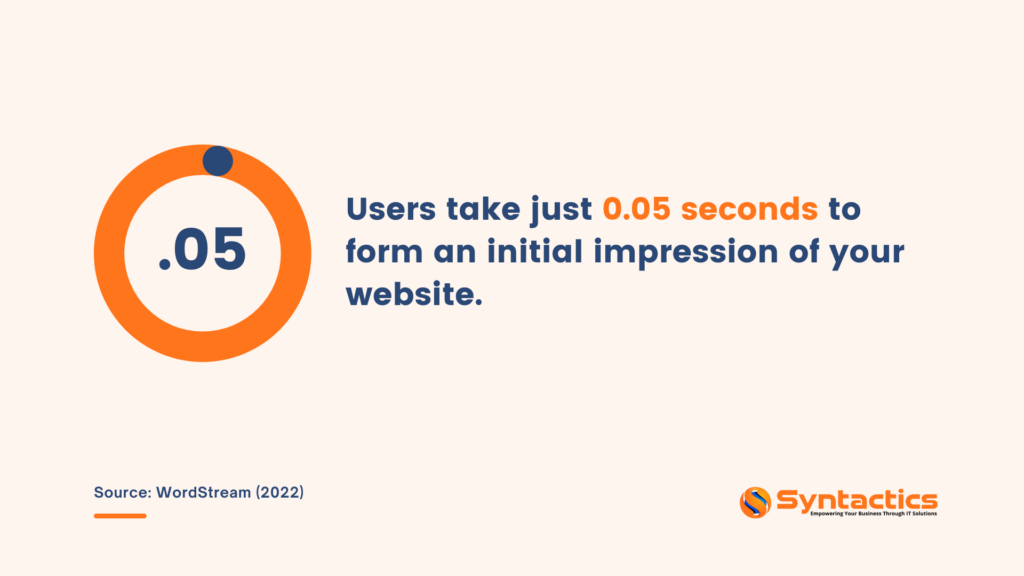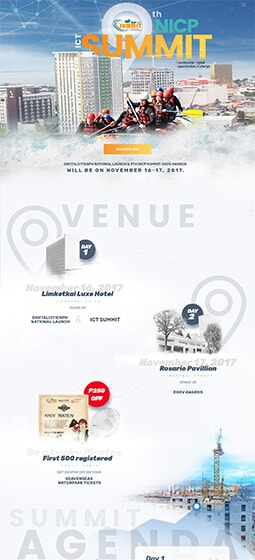
Web QA Process: What To Look For
The presentation of your business website speaks volumes to potential clients. Hence, web Quality Assurance (QA) services from skilled testers and specialists make a huge difference in the development process!
Whether it’s ensuring the general functionality of your eCommerce site or creating a minimalistic real estate website design, it’s essential to make a great first impression.

Source: WordStream.
Understanding Quality Assurance and Its Scope
Understanding the scope of Quality Assurance testing is essential for building robust and user-centric websites.
Dealing with website concerns is an inherent part of the web development process. Overlooked issues become more complicated over time. If they go unaddressed, they may cause issues later in the development process.
Web Quality Assurance testing is a fundamental component of web development. This process ensures the creation of top-notch, functional, and reliable websites. Moreover, it accounts for every aspect of the website to maintain the desired project quality level.
QA testing covers various practices and methodologies for identifying and remedying throughout the web development process. It’s vital to ensure that the final product meets specified requirements while providing a seamless User Experience (UX)!
What is the Difference Between QA and User Testing?
Web Quality Assurance is different from user testing, though both are crucial for building high-quality websites.
Web Quality Assurance Testing
Firstly, web QA testing focuses on ensuring technical functionality and seamless performance by eliminating bugs. Skilled testers or specialists create detailed technical reports on project errors. Additionally, web development QA testing focuses mostly on the following:
- Requirements compliance;
- Design, and
- Functionality.
User Testing
User testing focuses on the web project’s user experience. This testing type is critical in UX design, as it helps in building user-centric and efficient websites or web apps. Real user testers evaluate the web project’s usability and satisfaction and provide feedback for overall improvement.
According to UX Statistics from Baymard Institute, frictionless UX design can boost conversions by a whopping 400%!
Overall, Quality Assurance is important and complementary to user testing.
Key Considerations of Web Development QA
Quality Assurance in web development ensures the delivery of high-quality, user-friendly websites through effective QA practices. These services include examining the project for bugs and reporting them to the developers. This results in a product that can cultivate user satisfaction and trust.
The following areas in web development QA highlight the essential components of creating a website:
Requirements Compliance
This aspect of web Quality Assurance involves a list of requirements created by the tester after a client approves the design documents. Then, the web designers and developers provide impressive site layouts and wireframes.
Their output will need to meet the approved requirements. More importantly, meeting every client requirement is vital before the developers build the website.
Design
The website’s aesthetics are fixed and finalized based on client-approved design specifications. Additionally, the layout is tested on different browsers, devices, and platforms.
Functionality
The testers then address the project’s functionality during the final phase of the Quality Assurance process. Primarily, QA testing services involve verifying functionality by ensuring that all links, buttons, and other features function as expected across several browsers and platform devices.
Things Web QA Testers Look For
Quality Assurance teams approach their work equipped with ample knowledge of testing strategies and the right tools to ensure a robust website.
Here’s what testers look for during every testing phase:
Accuracy to the Original Design
Powerful UX Statistics To Impress Stakeholders revealed that a staggering 94% of first impressions are influenced by website design.
Thus, Quality Assurance specialists ensure the developed website stays true to the design approved and expected by the client. Of course, there will be some adjustments along the way, but the team will ensure that the finished product is acceptable to the client.
Afterward, the QA specialists will include the changes in the reports and expected output.
Content
Secondly, testers will check whether the text on each web page has correct details, grammar, spelling, etc. Additionally, they’ll test the availability of PDFs and other downloadable content.
Images
Quality Assurance specialists will examine the website’s images to ensure they are correct. They will also check for the proper resolutions and watermarks.
Menus and Links
In a survey from Clutch, 94% of online users cited easy navigation as a website’s most important feature.
Web Quality Assurance testers test all website menu items and links. For example, they visit the links’ destinations and check if those pages have any concerns.
Forms
Next, Quality Assurance specialists will fill out the forms to ensure that all fields function and the validations work as expected. For instance, they’ll submit forms to test if they work and if they can receive emails or notifications.
Browser Check
Testers will check whether they can access your website on various browsers, both desktop and mobile.
It’s vital to create adaptive and responsive designs for mobile-friendly sites. After all, catering to mobile users is critical — according to Forbes’ Top Website Statistics, 54% of all web traffic comes from mobile devices!
In particular, specialists will test your website and its features on popular browsers for compatibility.
Payment Gateways
If your website has any payment components, such as for eCommerce, web Quality Assurance testers can examine them for you. Moreover, QA testing services also include test payment processing to make sure the chosen online payment gateway connects to your bank accounts.
Data Privacy and Terms of Use
Lastly, every website that collects user data needs a privacy policy. It’s critical to current web development standards, so testers will consistently examine it.
If possible, Quality Assurance specialists will also verify the presence of visitors’ consent to accept cookies and include a Terms of Use document for legal purposes.
A Basic Web QA Process Checklist
Here’s a simple checklist that testers can use as a guide throughout the Quality Assurance process:
Initial Review
- Review all hyperlinks, then test and fix all broken links.
- Check menu buttons, drop-downs, and sidebars.
- Compare the site layout with the authorized version.
- Test if the browser breaks when you resize it.
- Test functionality and responses.
- Review the homepage header, footer, sidebar, and domain contents.
- Check the 404 pages. Ensure they are 404 and have a sitemap.
- Test on all devices (desktops, smartphones, and tablets) and all browsers.
Check the Design
- Test if the web design works on all major browsers.
- Test for consistency of styles and layout elements.
- Review key functionalities for visual flaws — links, forms, plugins, search bars, etc.
- Check the homepage, subpages, and landing pages for visual issues.
- Test the website’s mobile responsiveness.
Content
- Make sure that the website pages have no “Lorem Ipsum” content.
- Review if all web page content matches what was approved.
- Check if the main navigation links redirect you to the right content or pages.
- Proofread all content for spelling, grammar, and punctuation errors.
Contact or Submission Forms
- Send test messages for every form to guarantee that they work correctly.
- Check all Call-to-Action (CTA) functionality.
Quality Assurance specialists can build on this checklist to create the right dynamic in the web QA process that addresses issues throughout development!
Aim For Efficiency and Quality
Quality Assurance is of the utmost significance in the web development process.
Your website is an extension of your business, so it’s essential to ensure its top-notch quality and reputation. However, like your success, it always has room to expand and improve.
Web QA testers from the Philippines excel at testing websites to ensure that they meet your business needs!
Frequently Asked Questions About Web Quality Assurance
Is QA part of web development?
Yes, Quality Assurance is a key part of web development. QA professionals carefully examine websites and web apps as early as possible in the development process and continue until they go live. By working closely with designers and developers, testers ensure that projects are functional, free from bugs, and meet established requirements.
What is the difference between a QA specialist and a QA tester?
A Quality Assurance specialist handles a broad range of activities, such as developing strategies, creating test plans, and overseeing the QA process to ensure the web project is at all stages of the development process. A Quality Assurance tester is responsible for testing websites or web apps during development to detect and report bugs.
What are the top 3 skills for a quality assurance specialist?
The top three skills for a QA specialist include Quality Assurance testing knowledge, attention to detail, and communication. These are vital for ensuring that web products meet established standards and stakeholder expectations.

















Comment 0